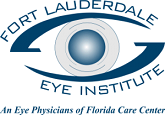What is an Ocular Migraine?
Do you ever experience strange visual disturbances that seem to come out of nowhere, only to disappear after a short while? If so, you might be experiencing what is known as an ocular migraine. While these episodes can be alarming, understanding their causes, symptoms, and treatment options can help you manage them more effectively.
An ocular migraine, also referred to as a retinal migraine, is a type of migraine that involves visual disturbances. Unlike typical migraines, which are characterized by severe headaches, ocular migraines primarily affect vision.
Symptoms of Ocular Migraines:
- Visual Aura: Classic symptoms of ocular migraines. The presence of visual disturbances is known as auras. Auras can manifest as flashes of light; blind spots; zigzag lines or shimmering lights; or tunnel vision. They are often temporary and can occur in one or both eyes.
- Temporary Vision Loss: Some individuals may experience temporary blindness in one eye, which typically lasts for less than an hour.
- Possible Headache: While many people with ocular migraines do not experience headaches, it can develop during, or after the visual disturbances.
Causes of Ocular Migraines:
The exact cause of ocular migraines remains unclear. However, they are believed to result from temporary changes in blood flow to the visual cortex of the brain or the retinal blood vessels. Certain triggers may precipitate ocular migraines in susceptible individuals, including:
– Stress
– Hormonal changes
– Certain foods or food additives
– Dehydration
– Lack of sleep
– Bright lights or glare
– Intense physical exertion
– Weather changes
Treatment and Management:
- Identify Triggers: Keeping a migraine diary can help identify potential triggers. Once identified, avoiding these triggers may help reduce the frequency and severity of ocular migraines.
- Medications: Depending on the frequency and severity of symptoms, your doctor may prescribe medications to prevent or alleviate ocular migraines. These may include:
– Beta-blockers
– Calcium channel blockers
– Antidepressants
– Anti-seizure medications
– Triptans (for acute migraine attacks)
- Lifestyle Modifications: Making lifestyle changes, such as getting an adequate amount of sleep, managing stress, staying hydrated, and eating a balanced diet can also help reduce the frequency and severity of ocular migraines.
- Manage Symptoms: During an ocular migraine episode, it’s essential to rest in a quiet, dark room until the visual disturbances subside. Over-the-counter pain relievers may help alleviate any associated headache.
When to Seek Medical Attention:
While ocular migraines are typically harmless, it is essential to consult a healthcare professional if you experience any of the following:
– New or severe headaches
– Persistent visual disturbances
– Vision loss that lasts longer than an hour
– Symptoms that interfere with daily activities
Ocular migraines can be unsettling, but with proper understanding and management, you can reduce their impact on your daily life. You can gain better control over your symptoms and enjoy an improved quality of life by identifying triggers, seeking appropriate treatment, and making lifestyle modifications. If you’re experiencing symptoms, do not hesitate to seek guidance from a healthcare provider to develop a personalized management plan.






